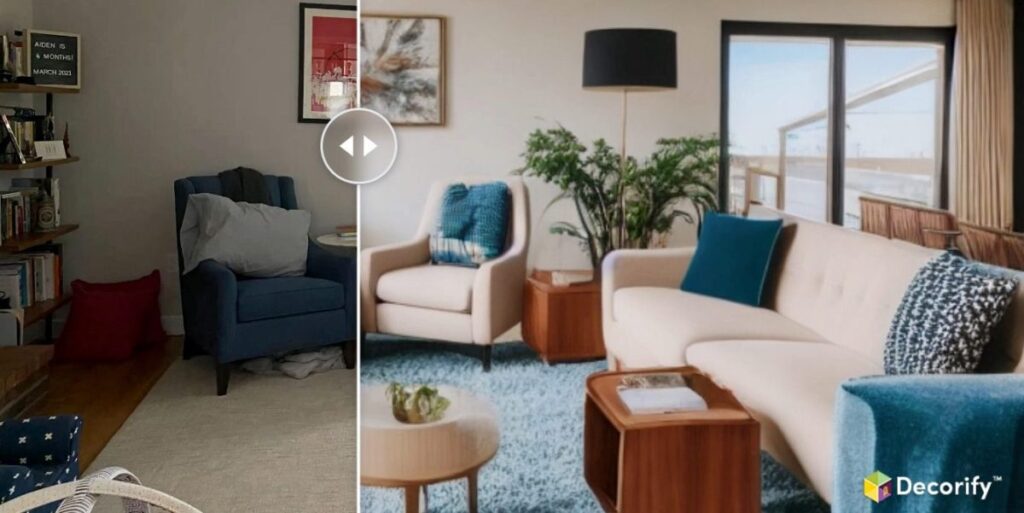Wayfair unveils generative AI solution to reimagine interior design
2 min read
Head over to our on-demand library to view sessions from VB Transform 2023. Register Here
Online furniture retailer Wayfair today announced the launch of Decorify, a novel generative AI solution that reimagines the entire interior design process.
Available in a pilot program starting today, the offering allows users to envision their homes in different styles by simply uploading a picture of their space. Using the uploaded image as a starting prompt, Decorify generates multiple interior design options while giving direct links to make relevant purchases.
“Anything we develop or deploy for our customers … must support our mission to help everyone, anywhere create their feeling of home,” said Wayfair CTO Fiona Tan. “Viewing generative AI through this pragmatic lens enables us to prioritize where and when we deploy development resources and ensure applications like Decorify delight our customers.”
Wayfair had already been using generative AI for business-critical areas like customer service and marketing.
Event
VB Transform 2023 On-Demand
Did you miss a session from VB Transform 2023? Register to access the on-demand library for all of our featured sessions.
How does Decorify’s design journey work?
With Decorify, which is available via mobile and desktop, Wayfair is providing users access to an open-source diffusion model, where shoppers can kickstart their design journey by simply uploading a picture of their space and selecting a style language that they want for their home (such as Mid-Century Modern or Bohemian). Using the inputs, the model produces multiple design options for that space in seconds, allowing users to explore and home in on the look and feel that matches their style.
Once the user selects a style, they can click on individual elements in that design and get links to buy similar items from Wayfair directly. These product suggestions are produced by a computer vision model trained on the company’s product catalog.
“Wayfair uses architectural constraints, so the design outputs look like the shopper’s space to provide a sense of familiarity but, at the same time, be completely different in style,” Shrenik Sadalgi, director of research and development at Wayfair, told VentureBeat.
Sadalgi noted that the entire generation process is iterative, where the company continues to fine-tune the prompts and the models over time. It has placed NSFW (“not safe for work”) filters on both inputs and outputs to prevent the models from hallucinating and generating inappropriate content. However, it seems that they still may include small hallucinations that might be part of the overall design.
>>Don’t miss our special issue: The Future of the data center: Handling greater and greater demands.<<
“With Decorify (and image generation), we are aware that images and designs can range from being perfect to unreal or unintentional, but they are meant to be inspirational,” Sadalgi emphasized. “The way we think about this for Decorify is that if you tried to create a latent space using the millions of products in Wayfair’s catalog, you’ll probably get something similar in magnitude to the latent space of open-source diffusion models. The theory is that there always exists some similarity mapping between the generated output and a set of products in our catalog, and trying to map it can provide value to a customer even when the design output is not perfect.”
That said, this is just the first version of Wayfair’s implementation of customer-facing AI. As customers use Decorify to discover new designs (even designs with small hallucinations), the company will move on to improving the diffusion models with its proprietary branding data.
This, Sadalgi said, will allow the company to produce designs that are even closer to the inspirational imagery customers experience on Wayfair and its exclusive brands.
“You can imagine how the design can contain more one-to-one matches of Wayfair products, or even have customers start with a list of products first and then produce a design with the products in their space,” he added.
Not first implementation of generative AI
While Decorify is available to all shoppers in the United States right now, it is not the first implementation of generative AI from the furniture retailer.
At Transform 2023, Wilko Schulz-Mahlendorf, the head of pricing and marketing science at Wayfair, said the company is using gen AI for its sales and service teams, but with human oversight in the loop. The common use cases he highlighted were content generation, text summarization, product recommendations, and suggestions to agents for best actions.
>>Follow VentureBeat’s ongoing generative AI coverage<<
“We embrace new technologies, and just like previous waves of AI and other emerging technologies (advancements in computer vision, 3D, AR/VR and spatial computing, etc.), we are actively experimenting [with] and adopting the [generative AI] capability in relevant parts of the organization such as creating tooling for marketing teams and customer service agents,” Sadalgi said.
“We have set up a task force that helps democratize access to the technology and its tooling, techniques and learning so each team is empowered to adopt the technological capability to power their roadmaps,” he noted.
VentureBeat’s mission is to be a digital town square for technical decision-makers to gain knowledge about transformative enterprise technology and transact. Discover our Briefings.



